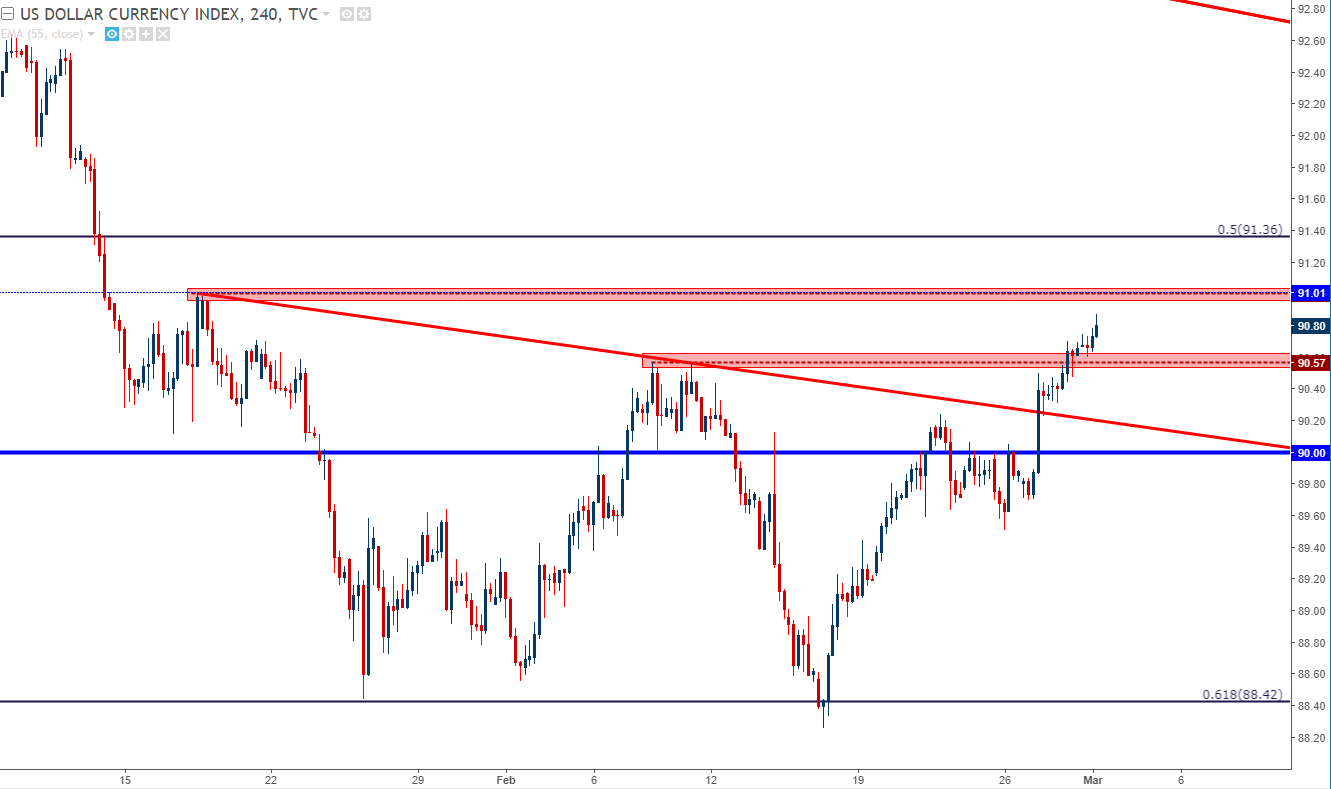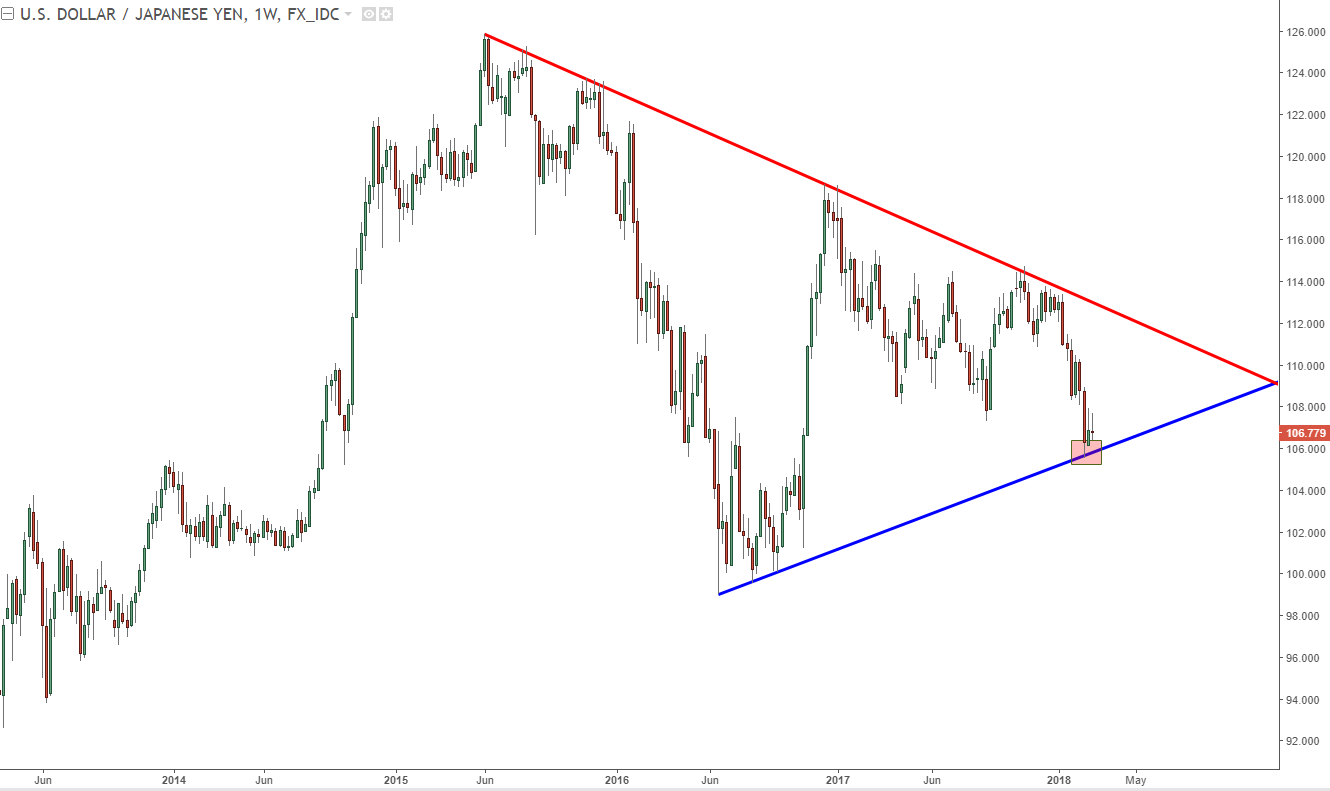
USD STRENGTH CONTINUES AS DOLLAR REMAINS BID
The US Dollar continues to catch bids and this strength is showing against most major currencies. The one notable exception, however, is the Japanese Yen as prices there remain in a relatively range-bound format. This can be somewhat vexxing for some market participants, particularly given the general penchant for correlations and proxy markets. USD/JPY is often looked at as a barometer of risk tolerance, with Yen strength taking over bids in the Dollar as investors brace for volatility ahead.
US DOLLAR VIA ‘DXY’ FOUR-HOUR CHART: CLOSING THE MONTH AT HIGHS

YEN STRENGTH OFFSETTING DOLLAR BIDS
And while that Yen strength was showing quite viscerally against the US Dollar in the first half of February, the past couple of weeks have seen prices see-saw back-and-forth. But – if we look elsewhere, using previously strong currencies on either side of USD or JPY; we can see considerable strength in both American and Japanese currencies.
But there may be another reason that USD/JPY hasn’t yet shown those risk-aversion tendencies, and this is something we started to look at a few weeks ago. The precipitous drop in the first seven weeks of the year pushed prices in USD/JPY down to a key trend-line projection. This trend-line projection makes up the support side of a multi-year symmetrical wedge pattern. Since this support came into play two weeks ago, bears have been unable to make much ground.
USD/JPY WEEKLY CHART: SYMMETRICAL WEDGE CONTINUES TO HOLD THE LOWS

YEN STRENGTH AS A PREVAILING THEME
If we walk away from the US Dollar and look elsewhere at pairs such as EUR/JPY and GBP/JPY, that Yen strength is fairly clear. The big question is why such a change of pace?
Yen-weakness was a favored theme because the BoJ was one of the most dovish Central Banks around-the-world. The massive QE program that the BoJ began in 2012 continued to drive liquidity into Japanese markets (and even some international ones via their purchase of ETF’s). This continued addition of liquidity kept the Yen weak; and the fact that inflation remained rather subdued kept calls for tapering or stimulus-exit at bay.
But that inflation argument has been undergoing some significant change of late: In December, Japanese inflation came-in at a 33-month high of 1%; and in January that inflation jumped all the way up to 1.4%. As these inflation reads have continued to grow, expectations for the Bank of Japan to slow down stimulus or, at the very least, begin looking at options to taper have continued to grow louder. To date, we have no such indication from the BoJ: But seemingly positive factors continue to get brushed off as market participants focus more-intently on the continued rise in prices.
















